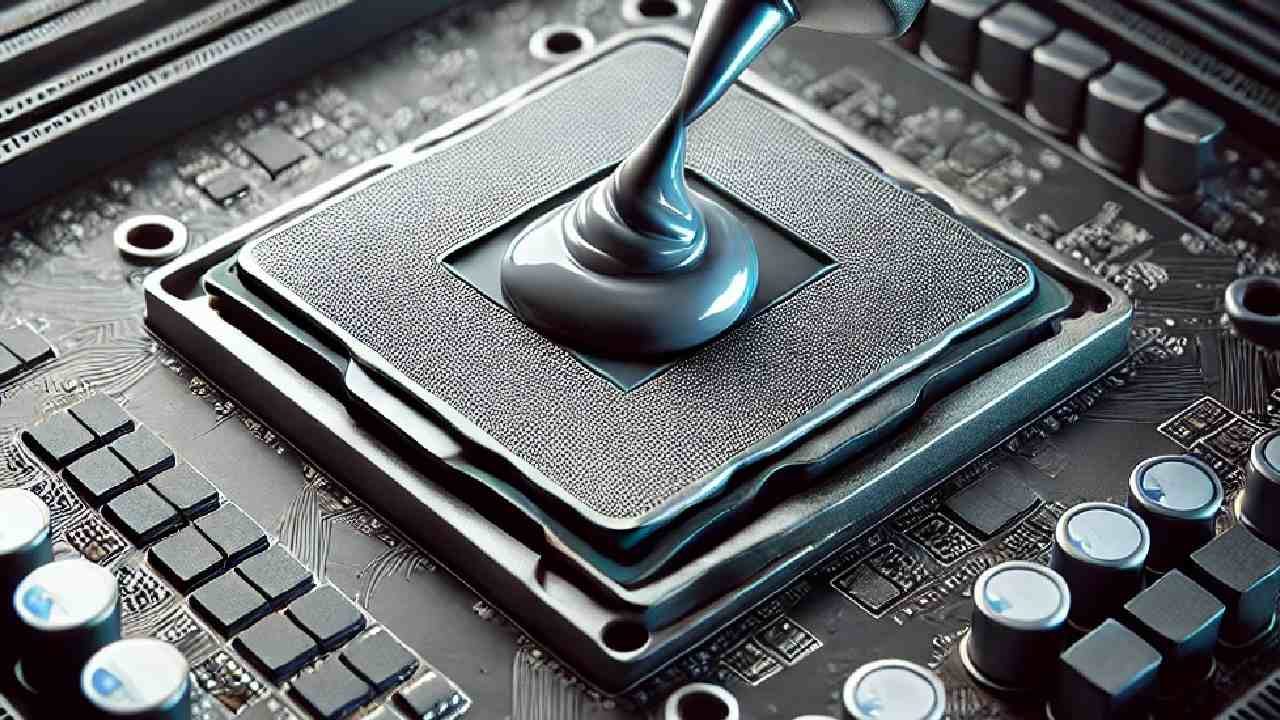Thermal paste and thermal pads are commonly used thermal interface materials across the thermal market. These are easily available, offer budget-friendly prices, and are an efficient solution against heat dissipation. When it comes to performance, both perform almost parallel to each other. Still, there are notable differences between both that must be aware of before choosing between thermal paste vs. thermal pad.
So today, we will explore the key differences and feature comparisons between thermal paste/pads. Where a thermal paste could be preferred over a thermal pad and vice versa? So far, the PC industry is the largest user of thermal paste and pads, we will keep aspects revolving around this industry along with others. Now let’s start the discussion to clear the concepts plus differences between both TIMs.
Read Also: Choosing Between Thermal Pad vs Thermal Gel
Thermal Paste vs. Thermal Pad
– Understanding Thermal Paste
A thermal paste is a semi-fluid substance in electronic components to transfer heat and eliminate air gaps. Manufacturers prepare it using a mixture of base material (silicone/epoxies/urethanes/acrylates) and thermally conductive fillers (zinc oxide, boron nitride, aluminium nitride, and aluminium oxide).
One can use the thermal paste commonly in Motherboards, Power Supplies, RAMs, and VRMs. The notable types of thermal paste are silicone-based thermal paste, metal-based thermal paste, ceramic-based thermal paste, and liquid metal thermal paste. Common amongst them is silicone-based thermal paste.
Key Features:
- It offers higher thermal conductivity.
- It eliminates air gaps effectively.
- It offers low thermal resistance.
- It is easily available and easy to apply.
- It provides stable performance and durability.
– Understanding Thermal Pad
A thermal pad is a type of thermal interface material used in electronic components to manage heat efficiently and fill air gaps. It is also a result of base material (silicone, polyurethane, graphite, PCMs,) and thermally conductive fillers(ceramic, carbon, metal).
Similarly, one can choose thermal pads for CPUs, GPUs, Consoles, and many other components/devices. Types of thermally conductive pads include silicone-based, non-silicone-based, metal-based, ceramic-filled, graphite, and phase-change thermal pads.
Key Features:
- It also provides a good thermal conductivity.
- It fills air gaps effectively.
- It is easy to apply and reusable.
- It provides a longer lifespan.
- It is shock/pressure/vibration proof.
Key Differences and Features Comparision
– Thermal Conductivity
As we already know, higher thermal conductivity means more efficient heat transfer. Talking about the thermal conductivity of thermal paste vs. thermal pad, the thermal pad offers a bit more here.
It ranges from 5-20 W/mK for thermal paste while 1-15 W/mK for thermal pads. Although both offer compatibility with low to high-end devices, the thermal conductivity range of thermal paste is still better.
– Temperature Ranges
In the case of the operating temperature ranges, the thermal paste features range from -50 to +150 degrees Celcius. Similarly, the thermal pad offers this range from -40 to +200 degrees Celcius which is a bit more than paste.
So, a TIM offering a lower/higher operating temperature range is the clear winner and can perform well under low plus extreme temperature levels.
– Electrical Conductivity
The presence of electrical conductivity may result in short circuits and other damages. In thermal interface materials, some offer non-conductivity and others don’t. In this case, only the specific types of thermal paste are non-conductive including silicone & ceramic paste.
Whereas thermal pads (all types) are non-conductive indicating that they are safe and secure to use in components.
– Easy to Apply
Well, the ease of application for thermal interface materials overcomes the possible risks in performance. In between the thermal paste vs. thermal pad, the thermal pad offers more ease of application.
Even a non-technical person can attempt to apply it. However, there is a need for technical knowledge to apply thermal paste like more/less quantity, air bubbles, and surface attachment.
– Lifespan & Reusability
If we compare the lifespan of thermal paste and thermal pads. The pads usually last longer than the thermal paste. The normal lifespan of a thermal pad is 3-10 years whereas the lifespan of a thermal paste is 1-3 years only.
After that, it needs a replacement, other than that a thermal pad can be reused multiple times if there is no visible impact on the elasticity, thickness, and shape of the pad.
When to Use Thermal Paste
- When you need higher thermal conductivity.
- When you are using high-end components/devices.
- When you need thermal solutions for CPUs, GPUs, and Game Consoles.
When to Use Thermal Pad
- When you need moderate thermal conductivity.
- When you need ease of installation.
- When you need reusability multiple times.
- When you need to manage uneven surfaces.
- When you need non-conductivity of electricity.
Applications Compatibility
If we compare the application compatibility of thermal paste vs. thermal pad, both offer a huge variety of compatibility. This compatibility will revolve around the usage in the PC Industry.
– Applications of Thermal Paste:
- CPUs: Normal Processors, Overclocking Processors,
- GPUs: AMD Graphics Cards, Nvidia Graphics Cards,
- Consoles: PlayStation, XBOX, Nintendo, Wii,
– Applications of Thermal Pad:
- VRMs: They provide power to computer components.
- RAMs: Normal RAMs, Cooling RAMs
- Power Supplies: Normal Plus Gaming Power Supplies of High Voltage
- Motherboards: Overclocking Motherboards, RGB Motherboards.
- SSDs: Cooling of PC storage devices.
JiuJu Thermal Paste & Thermal Pads
Thermal Paste and Thermal Pads manufactured by JiuJu are highly standard, reliable, and durable. Their other thermal interface materials including thermal gel, potting gel, adhesive tapes, etc are also renowned products in the thermal market.
If you are seeking a reputable manufacturer to make a collaboration, JiuJu can be a perfect choice. Contact JiuJu’s customer support line for detailed counselling about thermal products. They will provide a complete quotation, guidance about the transportation process, and offer discounted rates if you buy the TIMs in bulk.
So far, JiuJu has partnered with more than 500 long-term clients (businesses/consumers) worldwide. JiuJu follows an advanced operational mechanism using the latest manufacturing machinery, and skilled workforce.
The company has hired top-class material scientists and R&D experts serving them for the last 20 years. So, don’t miss the chance to get quality thermal interface materials from Jiuju at discounted rates (other perks/benefits).
Closing Remarks
Today’s guide to the key differences and comparisons between thermal paste vs. thermal pad proves both products a solid choice against heat management. However, choosing a specific TIM depends upon its compatibility with components and vice versa.
Thermal Paste is a choice for high-end PC users using it for high-end components. Similarly, the thermal pad is a choice for those who want moderate performance, longer lifespan, non-electrical conductivity, and ease of application. In the end, both perform their jobs accordingly.
JiuJu is producing quality Thermal Paste/Pads, don’t forget to check them.





